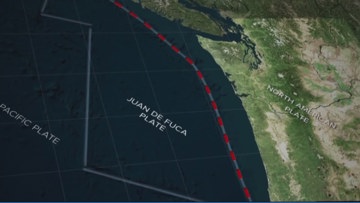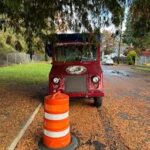PORTLAND, Ore. — As the world prepares for the annual International ShakeOut earthquake drill, Oregon scientists have unveiled new research suggesting that the West Coast’s most dangerous fault systems — stretching from California to Oregon — may be more interconnected than previously believed.
The finding adds a troubling new dimension to long-standing fears about “The Big One,” the catastrophic earthquake expected to hit the Cascadia Subduction Zone, one of the most volatile fault lines in North America.
New Research Reveals Possible Fault Synchronization
A team of geologists at Oregon State University has developed a theory indicating that the Cascadia Subduction Zone and California’s San Andreas Fault could be synchronized — meaning seismic activity in one could trigger movement in the other.
Also Read
“This discovery changes how we think about risk along the entire West Coast,” said Rachit Nerwal, chief resilience officer at Portland’s Bureau of Emergency Management. “If the faults are truly linked, a quake in one system could cascade into another, magnifying the damage and delaying outside help.”
That scenario would not only devastate Oregon but could cripple key infrastructure and complicate emergency response efforts across state lines.
Preparing for the Worst
With the new findings, Portland officials are urging residents to take preparedness more seriously than ever. Nerwal emphasized the importance of self-sufficiency after a major quake.
“People need to stock up now with at least two weeks of food, water, and basic supplies,” he said. “When a disaster hits, the first help you’ll receive won’t be from FEMA or city officials — it’ll be from your neighbors.”
The city has established more than 50 Basic Earthquake Emergency Communication Nodes (BEECNs) — designated sites where residents can gather after a disaster. Trained volunteers at each site will help coordinate emergency communication, provide basic aid, and share updates from authorities.
Nerwal also encouraged everyone to practice the “Drop, Cover, and Hold” technique during tomorrow’s statewide drill.
“If you can’t find a sturdy table, cover your head with anything available,” he said. “Even a laptop can protect you from falling debris.”
The Science Behind “The Big One”
The Cascadia Subduction Zone, a 600-mile fault running from northern California to British Columbia, has the potential to produce a magnitude 9.0 earthquake capable of shaking the region for minutes at a time.
According to Althea Rizzo, geologic hazards program coordinator for the Oregon Department of Emergency Management, such a rupture could impact a vast area — from Alaska to Hawaii.
“This isn’t like a crustal earthquake that lasts 10 to 30 seconds,” Rizzo explained. “A Cascadia event produces minutes-long rolling waves that can collapse bridges, topple buildings, and devastate coastlines.”
Experts estimate there’s a 37% chance of a major Cascadia event in the next 50 years — and if the new synchronization theory proves accurate, the impact could extend deeper into California than previously anticipated.
Building Resilience Through Practice
Both Rizzo and Nerwal emphasized that preparedness saves lives. The ShakeOut drill, which will take place across Oregon on Thursday, aims to build “muscle memory” for what to do when the shaking starts.
“The more we practice, the more automatic our reactions become,” said Rizzo. “We want people to survive the quake — and to be healthy afterward.”
For many, the prospect of a synchronized Cascadia and San Andreas event is frightening. But researchers and emergency planners alike agree that knowledge and readiness remain the best defense.
As Nerwal put it, “We can’t stop the ground from shaking — but we can make sure Oregon stands back up when it does.”












